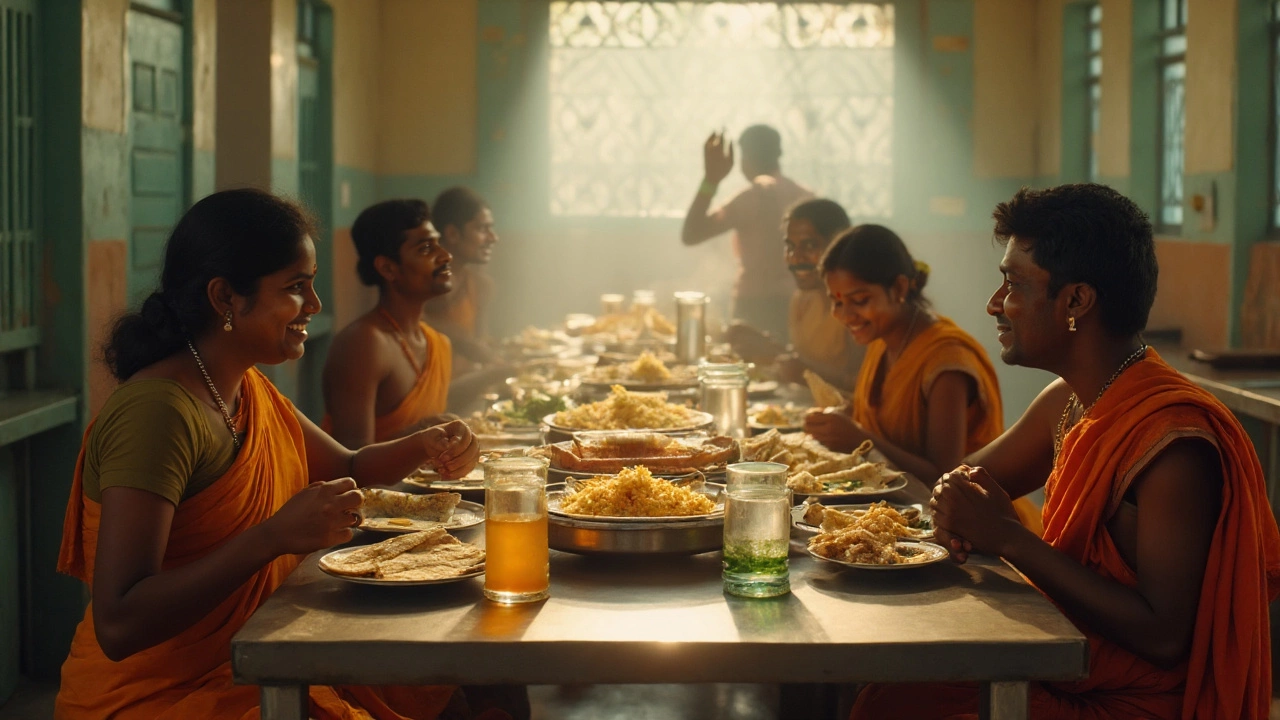SEARCH
Best South Indian Food: What to Eat and Where
If you’re scrolling through menus and wondering what really makes South Indian food stand out, you’re in the right place. The region packs flavor, texture, and a lot of variety into every bite. From thin, crackly dosas to heavy, coconut‑laden curries, there’s a dish for every mood.
Must‑Try South Indian Dishes
Dosa – Think of a crepe but made with fermented rice‑lentil batter. It’s light, tangy, and perfect with coconut chutney or sambar. Try plain dosa first, then move to masala dosa stuffed with spiced potatoes.
Idli – Steamed rice cakes that are soft and fluffy. They’re a breakfast staple and pair well with tomato chutney, coconut chutney, or sambar. They’re also the easiest thing to make at home.
Uttapam – A thick pancake topped with onions, tomatoes, chilies, or even peanuts. The batter is the same as dosa, but the texture is more like a savory cake.
Chettinad Chicken – If you like heat, this is the dish to try. It uses roasted spices, coconut, and black pepper to create a fiery, aromatic sauce. It’s often served with plain rice or parotta.
Fish Curry (Meen Curry) – Coastal states like Kerala and Tamil Nadu serve fish in a tangy, coconut‑based gravy. The balance of tamarind, curry leaves, and mustard seeds makes it unforgettable.
Pongal – A comforting rice and moong dal porridge, seasoned with black pepper, cumin, and ghee. It’s a go‑to comfort food for many South Indians.
Where to Find Authentic Flavors
Big cities often have a mix of chain restaurants and family‑run spots. For authentic taste, look for places that serve food on banana leaves or use a traditional wood fire tawa for dosas. In Delhi, Andhra Bhavan offers reliable Chettinad dishes, while in Mumbai, Shree Annapoorna serves solid idlis and vadas.
If you’re traveling in South India, street stalls are gold mines. In Chennai, the lanes of Parry’s Corner are famous for thin, buttery dosas. In Kochi, you’ll find fish fry stands right by the harbor, where the aroma of fresh fish meets seasoned coconut oil.
For a home‑cooked experience, look for local cooking classes. Many homestays let you join the kitchen, knead the batter, and watch the dosa spread on a hot iron plate. It’s a cheap way to learn the basics and walk away with a recipe you can try later.
When you order, ask for the heat level. South Indian chefs are used to adjusting spices, so you can get it mild or fiery. Don’t be shy to ask for extra coconut chutney – it’s the perfect cool counterbalance to spicy dishes.
Finally, remember that South Indian food isn’t just about heat. The subtle sweetness of coconut, the sour bite of tamarind, and the crunch of fresh curry leaves all play a role. Try a mixed plate: dosa, idli, a spoonful of sambar, and a side of mango pickle. You’ll get the full spectrum of flavors in one sitting.
So next time you’re hungry for something different, give South Indian food a go. Start with a simple dosa, move on to a spicy Chettinad chicken, and finish with a sweet payasam if you’re feeling adventurous. The only thing you’ll miss is the next bite.

Which South Indian State Has the Best Food? 2025 Guide for Travelers & Foodies
Wondering which South Indian state has the best food? Get a clear winner, trade-offs, must-try dishes, smart routes, costs, and hygiene tips-all in one practical guide.
Continue reading